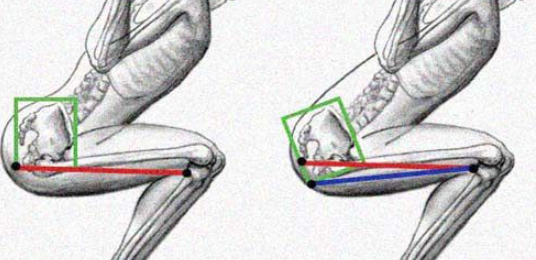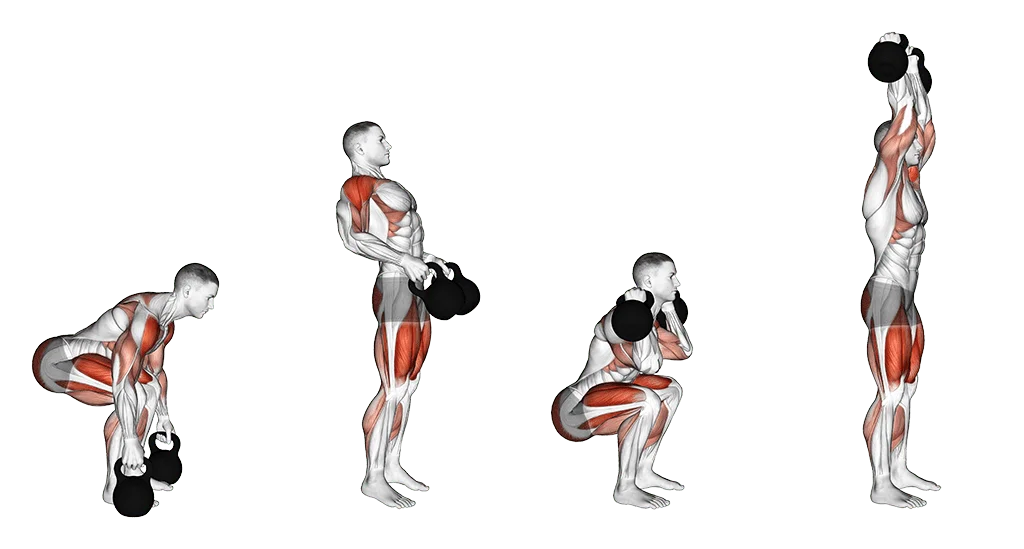The infamous “butt wink.” will starts messing with your progress or, worse, causing that nagging ache in your lower back. You know the one. Picture this: you’re hitting the bottom of your squat, feeling strong, and then… bam. Your lower back seems to tuck under you almost like a shy turtle pulling into its shell. That, my friend, is butt wink in action. According to the National Academy of Sports Medicine (NASM), it’s essentially your pelvis doing a little unwanted posterior tilt at the worst possible moment. It happens, but letting it slide? That’s where trouble can start brewing.
1. What Causes Butt Wink?

- Your Hips Are Locked Down: Think about it. To sink deep into that squat without your back rounding, your hips need freedom. They need to flex, rotate, and move smoothly. If they’re tight – maybe from sitting all day or just not mobilizing enough – that deep squat position forces your pelvis to tuck to find space. It’s like trying to fold a stiff cardboard box.
- Your Ankles Won’t Play Ball: This one sneaks up on people! If lifting your toes towards your shin (ankle dorsiflexion) feels restricted, guess what happens when you try to keep your heels down in a deep squat? Your body compensates higher up. Often, that means your pelvis tilts posteriorly (hello, wink!) to keep you from falling backwards. Check how far your knees can track over your toes comfortably – that’s a clue.
- Your Core Needs a Wake-Up Call: Your core isn’t just about six-pack abs; it’s your body’s natural weightlifting belt. If those deep stabilizers – the ones wrapping around your spine and pelvis – aren’t firing properly or are weak, they can’t hold everything steady under load. As SELF Magazine points out, a weak core is a prime suspect for letting that pelvis tuck under when the going gets tough.
- Your Squat Technique Needs Tweaking: Sometimes, it’s simply how you’re set up. Feet too close together? Might not give your hips the room they crave. Letting your chest collapse or forgetting to actively brace your core throughout the entire movement? Recipe for a winking disaster. It happens to the best of us if we get lazy with form!
2. Why Is Butt Wink A Problem?
- Your Back Will Yell at You: This is the big one. That rounding at the bottom? It puts unnatural, shearing stress on the discs and joints of your lumbar spine. Over time, especially under heavier weights, this isn’t just discomfort – it’s a fast track to real pain and potential injury. Trust me, I’ve seen it sideline too many eager lifters.
- You’re Leaving Strength on the Table: When your spine isn’t stable and braced properly, your powerhouse muscles – your glutes, quads, hamstrings, and yes, your core – can’t generate force efficiently. That wink literally leaks power. You know you’re capable of lifting more, but that winking bottom position is holding you back.
- Everything Else Gets Messy: Poor squat mechanics don’t just affect your squat. That instability can ripple out, putting undue stress on your knees, hips, and even your upper back. It throws off the whole kinetic chain. Fixing the wink isn’t just about a better squat; it’s about moving better everywhere.
3. How to Fix Butt Wink?
- Improve hip mobility: Prioritize hip mobility drills every single day, especially before squatting. Deep lunges with a twist, pigeon pose, and controlled leg swings are gold. Spend quality time here – 5-10 minutes makes a massive difference.
- Improve ankle mobility: But the game-changer? Calf stretches with a bent knee (targets the soleus) and a straight knee (targets gastrocnemius). Also, try standing facing a wall, foot a few inches back, and gently drive your knee forward over your toes without your heel lifting.
- Strengthen the core: We need stability. Focus on quality, not quantity. Can you truly feel those deep abdominal muscles firing to lock your pelvis and spine in place?
- Adjust squat stance: Grab an empty bar or just bodyweight and experiment. Try a slightly wider stance, toes pointed out a bit more (maybe 30 degrees).
- Practice proper squat technique: Technique is king. Focus religiously on:
- Bracing: Take a big breath into your belly, squeeze your abs hard (360 degrees), and hold that tension.
- Chest Up: Imagine a proud chest. Don’t let your upper back round forward.
- Hips Back & Down: Initiate by sitting back, not just dropping straight down. Keep tension in your hamstrings and glutes.
- Controlled Depth: Only go as deep as you can maintain a neutral spine.
Butt wink isn’t a life sentence; it’s a signal. It’s your body asking for a little more mobility here, a bit more strength there, and some focused attention on your form. Finding your perfect stance, and drilling perfect technique – you transform that wink from a liability into strength. You build the kind of strong, resilient foundation that makes everything in the gym feel better.
Welcome! I’m Jordan Mitchell, the dedicated editor at Leadman Fitness, where we specialize in manufacturing high-quality bumper plates, barbells, weight machines, kettlebells, and dumbbells. With a passion for fitness and a keen eye for detail, I ensure that our product information is clear, accurate, and engaging for our customers. My role involves collaborating closely with our design and production teams to highlight the innovative features and superior craftsmanship that set Leadman Fitness apart in the industry. Whether you’re a professional athlete or a fitness enthusiast, I’m here to provide you with the information you need to achieve your training goals with our top-of-the-line equipment.
